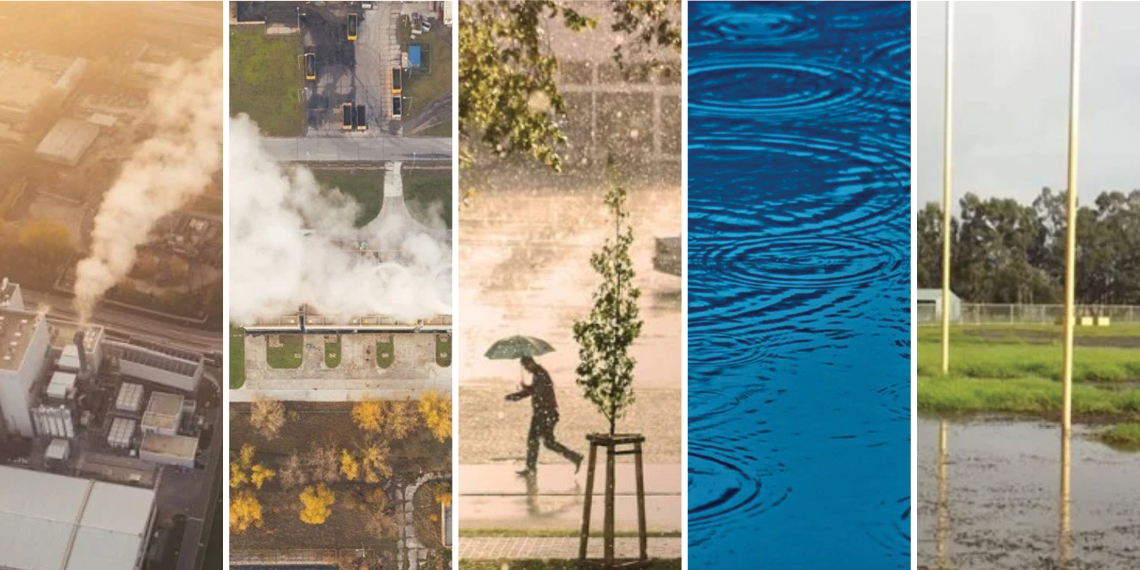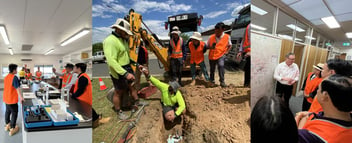Top Five Technical Papers 2021

Each year, we publish numerous technical papers that have been submitted by members and reviewed by our Water e-Journal committee. In 2021, we saw a fascinating and varied amount of research, from determining the best technique for calculating average dry weather flow to how waste and water can play a role in climate change and emissions reductions strategies to managing the challenge of when urban stormwater meets high groundwater. These are the five most read technical papers from 2021, being showcased in the lead-up to Ozwater'22.
1. Estimating ADWF at sewage treatment plants
Estimating and understanding Average Dry Weather Flow (ADWF) is fundamental to the planning, design, and operation of sewage treatment plants (STPs). This paper reviewed methods for estimation of ADWF, in four general groups: Rainfall-based; Equivalent person (EP) based; Basic statistical (Percentiles); and ‘Novel’. The ‘Novel’ methods identified were: Histogram/ Mode; Antecedent Precipitation Index (API); Ratio of Short Term and Long-Term Moving Averages; K-means Clustering; Diurnal Profile Smoothing; and Kernel Density Estimation.
2. Better understanding wastewater treatment's nitrous oxide emissions
This paper focuses on the first two potential sources of confusion around wastewater treatment plant (WWTP) nitrous oxide (N2O) emissions mentioned above. It starts with an overview, in simple terms, of the main biochemical mechanisms of N2O formation in activated sludge systems, based on current knowledge from research literature. Next, recent results (from both published literature and previously unpublished data, both overseas and in Australia) are examined, highlighting a common trend in average N2O emission factors from different WWTPs. Lastly, these results are compared with the N2O emission factors as defined in the IPCC (2019) and the current Australian NGER Determination (2020) reporting protocols.
3. "Gully pit inserts" shown to reduce pollutants in stormwater
‘Gully pit inserts’ (or ‘gully baskets’) are a commonly applied stormwater control measure given they can often be easily integrated into gully pits with no impact to the usability of the area. Stormwater treatment performance monitoring has been undertaken for a gully pit with a fine grade (200-micron) bag of 300mm depth in a car-park in Western Sydney, NSW, Australia. The gully pit insert receives runoff from a 100% impervious car-park area of 400m2. Performance testing demonstrated that the gully pit insert was able to achieve significant reductions in stormwater pollutant concentrations, with a concentration reduction efficiency ratio for total suspended solids, total phosphorus and total nitrogen of 52, 67 and 41% respectively.
4. Low-carbon future opens opportunities for water sector
This paper presents an overview of the policies relating to climate change and emissions reduction strategies in Australia, as well as a review of low emission technologies and investment opportunities for the water and waste sectors.
5. When urban stormwater meets high groundwater
In Perth, Western Australia, “high” groundwater areas (i.e. where the groundwater is less than 4 m below ground) represent an important challenge for residents, real estate developers and public authorities. High groundwater is an indispensable resource supporting wetlands and vegetation. Yet current knowledge and management practices are lagging in their ability to maintain the benefits to hydrologic and ecologic systems, while reducing risks to urban infrastructure and open space. An Expert Panel was convened by the Cooperative Research Centre for Water Sensitive Cities (CRCWSC) in 2019-2020 to gain a better understanding of current practices for monitoring, modelling, and managing groundwater levels in urbanising sites.


